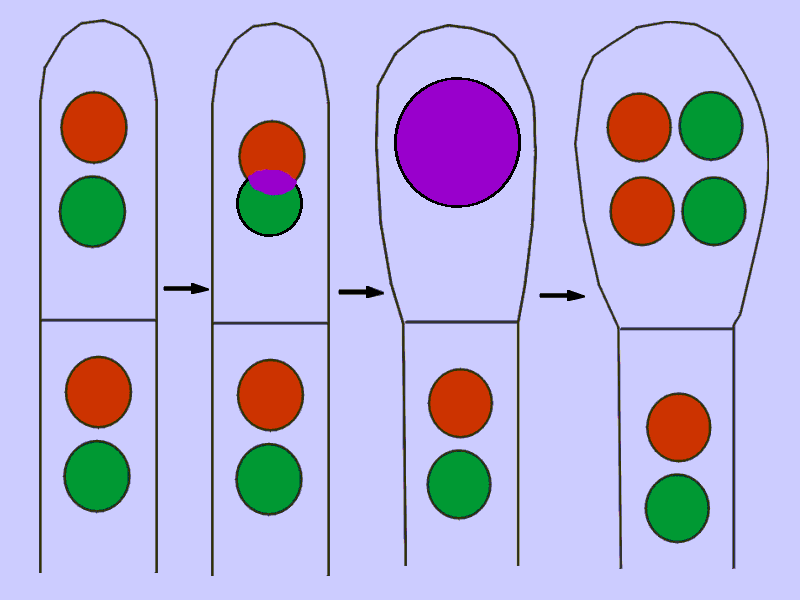DISCUSSION OF SEXUAL REPRODUCTION BY MEANS OF ASCI AND BASIDIA
Fungi producing asci and basidia are all members of the subkingdom Dikarya, a group of fungi that spend at least part of their lives in a dikaryotic state. A dikaryotic fungus is one in which each cell of its hyphae contains two haploid nuclei. When the cell divides, the new cell also contains duplicates of each of the two nuclei. At an appropriate time the pairs of nuclei fuse to form zygotes, which then undergo meiosis to form four haploid nuclei. The destination of these four nuclei represents the distinction between the two phyla Ascomycota and Basidiomycota.

The illustration at left represents four stages in the meiotic cycle of a member of the Dikarya. The first stage shows a hypha with two cells, each having two nuclei. In the second hypha the nuclei in the end cell have begun to fuse. In the third hypha the end cell contains a zygote formed from the complete fusion of two nuclei. The fourth hypha has four haploid nuclei in its end cell following meiosis of the zygote. Throughout all of these stages the lower cell remains unchanged.
The four steps presented in the diagram are common to all Dikarya but subsequent stages follow one of two very different routes. In the Ascomycota the cell containing four nuclei goes on to become an ascus while in the Basidiomycota it becomes a basidium.